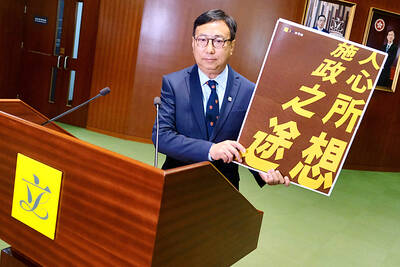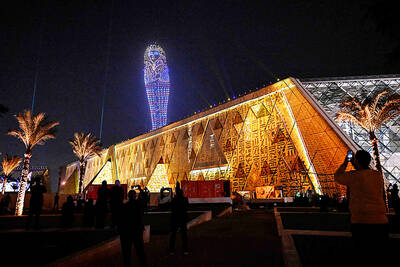Ireland will mount its biggest security operation to welcome Britain’s Queen Elizabeth II and US President Barack Obama in the space of a week.
Militant groups opposed to Britain’s control of Northern Ireland are the biggest risk during the queen’s four-day visit.
“We know her majesty is welcome in this country,” Superintendent John Gilligan told a news conference. “Unfortunately in this country still we have a threat posed by dissident republicans,” he said. “The gardai [police] are prepared if necessary to deal with any issue that may arise.”
Surveillance has been increased on suspected dissident republicans and al-Qaeda sympathizers, some of whom have been arrested and questioned. Police have sealed inspection covers in roads and combed central Dublin, where much the queen’s visit will be focused.
Up to 5,000 police officers, backed by 2,000 soldiers and with support from the navy and airforce, will provide security during the monarch’s visit.
Adding to the security headache is the arrival of British Prime Minister David Cameron for the state dinner in the queen’s honor at Dublin Castle on Wednesday. On the same evening, the UEFA Europa League final will be held in Dublin between Portuguese teams Porto and Benfica.
The threat from dissident nationalists in Northern Ireland is the highest since a 1998 peace deal ended a violent campaign by the Irish Republican Army.
A protest is planned outside Dublin’s Garden of Remembrance, a memorial to Irish people who died fighting for independence from Britain, which the queen will visit, as well as on the evening of the state banquet.
Three days after the departure of the queen, Obama will arrive to meet the Irish president and prime minister and visit the County Offaly town of Moneygall from where one of his ancestors emigrated in the 1800s.
Fears of possible revenge attacks after the killing of al-Qaeda leader Osama bin Laden has heightened security preparations
US secret service agents have vetted Moneygall, whose near 300 inhabitants are delighted at the prospect of welcoming their “most famous son.”

‘CHILD PORNOGRAPHY’: The doll on Shein’s Web site measure about 80cm in height, and it was holding a teddy bear in a photo published by a daily newspaper France’s anti-fraud unit on Saturday said it had reported Asian e-commerce giant Shein (希音) for selling what it described as “sex dolls with a childlike appearance.” The French Directorate General for Competition, Consumer Affairs and Fraud Control (DGCCRF) said in a statement that the “description and categorization” of the items on Shein’s Web site “make it difficult to doubt the child pornography nature of the content.” Shortly after the statement, Shein announced that the dolls in question had been withdrawn from its platform and that it had launched an internal inquiry. On its Web site, Le Parisien daily published a

China’s Shenzhou-20 crewed spacecraft has delayed its return mission to Earth after the vessel was possibly hit by tiny bits of space debris, the country’s human spaceflight agency said yesterday, an unusual situation that could disrupt the operation of the country’s space station Tiangong. An impact analysis and risk assessment are underway, the China Manned Space Agency (CMSA) said in a statement, without providing a new schedule for the return mission, which was originally set to land in northern China yesterday. The delay highlights the danger to space travel posed by increasing amounts of debris, such as discarded launch vehicles or vessel

RUBBER STAMP? The latest legislative session was the most productive in the number of bills passed, but critics attributed it to a lack of dissenting voices On their last day at work, Hong Kong’s lawmakers — the first batch chosen under Beijing’s mantra of “patriots administering Hong Kong” — posed for group pictures, celebrating a job well done after four years of opposition-free politics. However, despite their smiles, about one-third of the Legislative Council will not seek another term in next month’s election, with the self-described non-establishment figure Tik Chi-yuen (狄志遠) being among those bowing out. “It used to be that [the legislature] had the benefit of free expression... Now it is more uniform. There are multiple voices, but they are not diverse enough,” Tik said, comparing it

Prime ministers, presidents and royalty on Saturday descended on Cairo to attend the spectacle-laden inauguration of a sprawling new museum built near the pyramids to house one of the world’s richest collections of antiquities. The inauguration of the Grand Egyptian Museum, or GEM, marks the end of a two-decade construction effort hampered by the Arab Spring uprisings, the COVID-19 pandemic and wars in neighboring countries. “We’ve all dreamed of this project and whether it would really come true,” Egyptian Prime Minister Mostafa Madbouly told a news conference, calling the museum a “gift from Egypt to the whole world from a